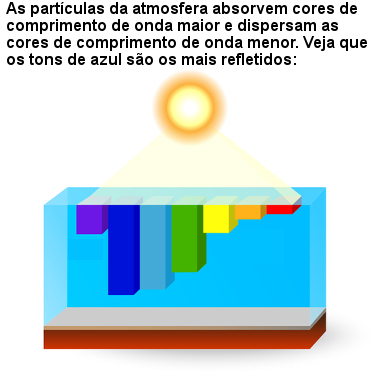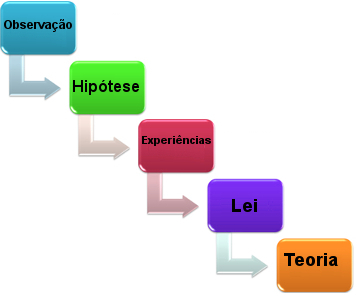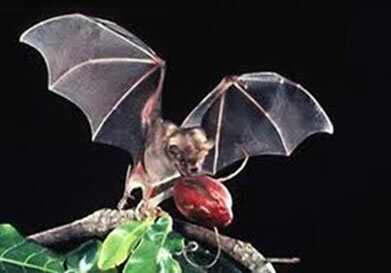One of the most intriguing questions that follow most people from a young age is: Because the sky is blue?This doubt becomes even more interesting when we learn that the universe is darkand also when we see that, at dusk, the color visualized in the sky changes to a reddish tone.But why does this happen?
Well, to answer all these questions, we first need to understand the composition of colors and light. The colors we see are made up of waves. Each color has a different wavelength. This length is the distance between one crest and another, that is, between the highest parts of the wave. The longer the wavelength, the lower its radiation energy and vice versa.

The wavelength is the distance from one peak to another of an electromagnetic wave.
The sunlight we see in the sky looks white,but actually this white color is formed by the union of all the colors of the rainbow. This can be seen in the figure below, where white light passes through a prism and breaks down into the following colors: red, orange, yellow, green, blue, indigo, and violet.

Decomposition of white sunlight when passing through a prism
The spectrum of visible light below shows us that red is the color with the longest wavelength. Blue, indigo and violet have the shortest wavelengths.

Visible light spectrum and their respective wavelengths
When white light from the Sun hits the Earth's atmosphere, it comes into contact with the molecules and atomyou donate. Among these very small molecules, there is mainly oxygen gas (O2) and nitrogen gas (N2). These particles reflect or propagate the colors that make up sunlight in different directions.
But light spreads more when it passes through particles with a diameter equal to one-tenth the wavelength (color) of light. As blue tones have the shortest wavelengths, they are more compatible with the small particles that make up the air than the wavelengths of red, orange, yellow and green.
Thus, molecules in the atmosphere diffuse blue in a higher amount than other colors, spreading the blue to all directions in the atmosphere. It is this reflected color that reaches our eyes on the Earth's surface, so we look at the blue sky.
Astronauts who see our sky outside the Earth also see the color reflected by the molecules in the atmosphere, that is, they also see Earth's sky blue.

The color of the sky is blue because this is the color most dispersed by particles in the atmosphere.
But in space there is no atmosphere, we say that there is a vacuum. As there is no atmosphere, the sun's rays are not scattered, and space is dark. This shows us that the color of the sky depends on the particles present in the atmosphere. Since the atmospheres of other planets are not the same as ours, their particles have different sizes and shapes and therefore spread different colors. This explains why the sky on other planets is a different color from ours.

The planets of the Solar System have skies with different colors because of the constitution of their atmospheres.
Here on Earth this occurrence can also be visualized. In the following figure, for example, we have an image of the sky on Mount Everest, the highest mountain on earth. See that the sky there is a darker blue. Why does it happen? Because the density of air is very small and there are few molecules to spread the blue. For this reason, the color of the sky is darker.

The sky on top of Mount Everest is darker than usual
However, one question remains: Why is the sky red at dusk?
When the sun is setting, light passes through a much larger amount of atmosphere before reaching our eyes. Colors with longer wavelengths, such as red and orange, are the last to be diffused, being visible even after passing through this greater amount of atmosphere. The blue light, which has been dispersed almost entirely in this way, as the atmosphere acts as a filter, practically does not reach our eyes. On the other hand, red light, which is not scattered but transmitted, can be visualized.
Also, dust and smoke particles that are larger than air particles are more compatible with the red wavelengths. Therefore, these particles scatter red more than blue. The result is wonderful views, like the sunset shown below:

Sunset on the beach with reddish sky
By Jennifer Fogaça
Graduated in Chemistry



